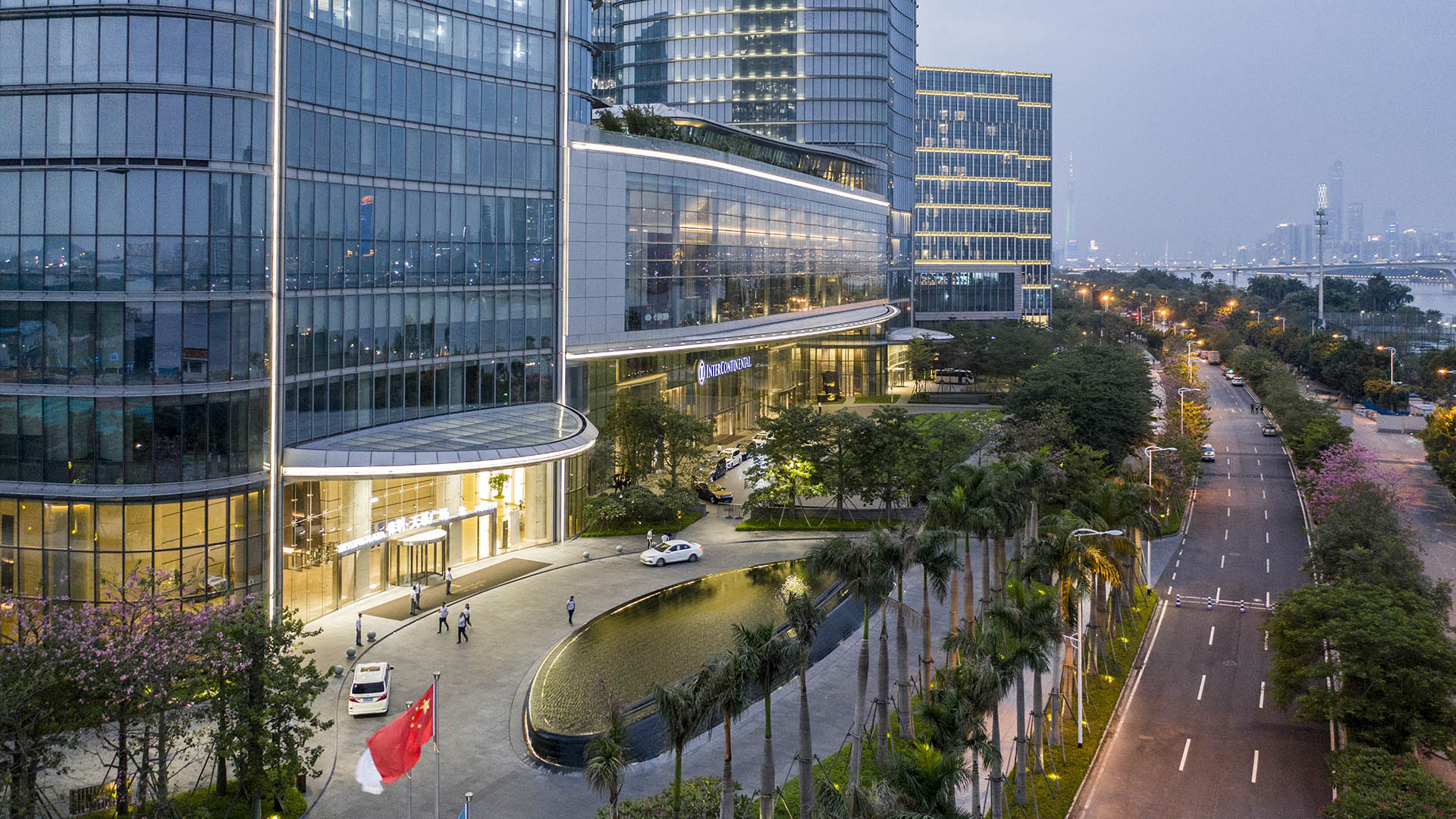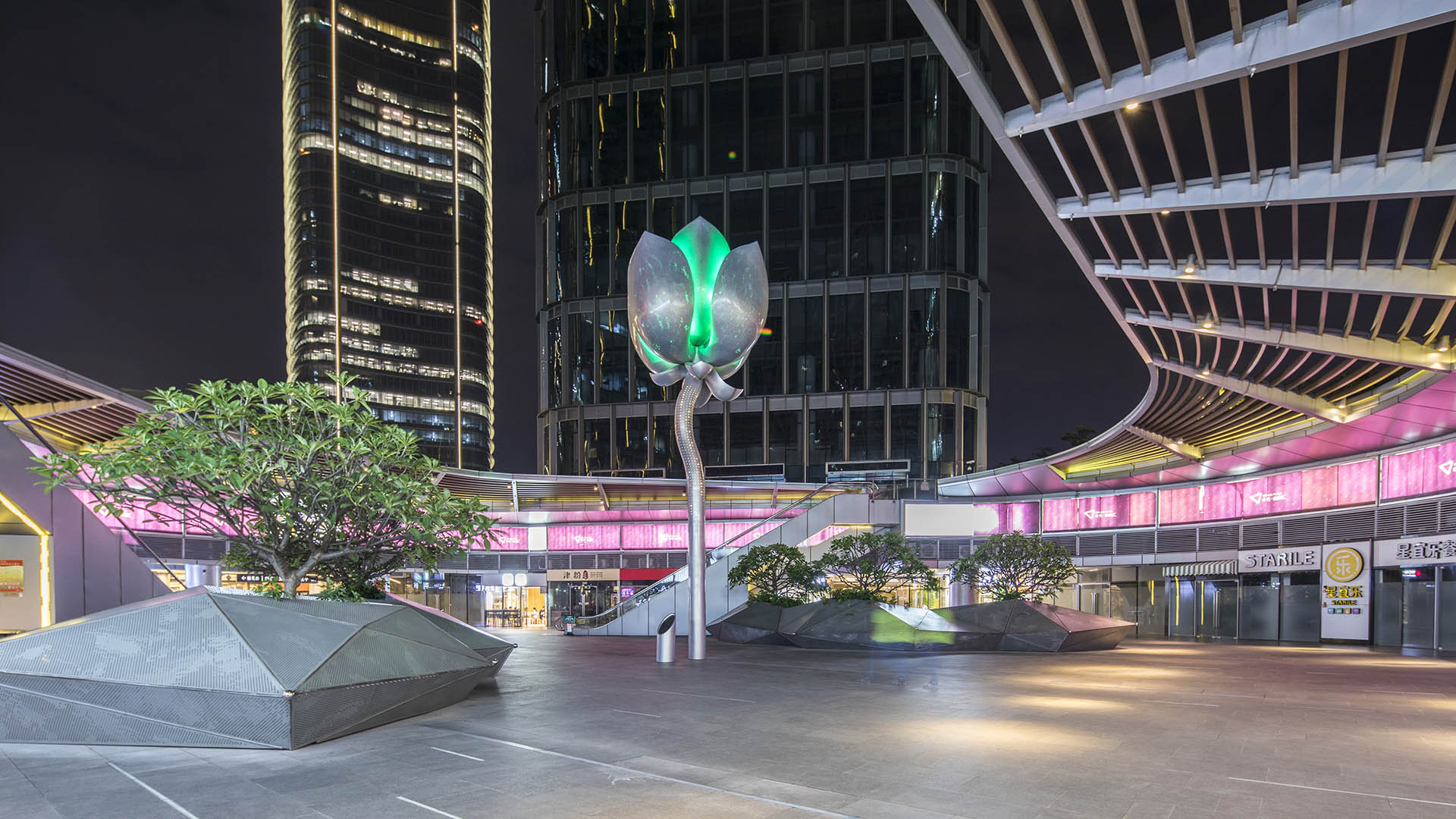The iconic architecture and riverside context that characterize Poly Pazhou were inspirations in this SWA/SOM collaboration, which also took adjoining development in the burgeoning region into account. Broad, sweeping landscape, featuring diverse local plant species, embraces both the soaring buildings and the Pearl River corridor, extending its spatial characteristics well beyond the site. Along its perimeter, the landscape framework integrates with the adjoining parcels 5 and 10, forming a distinct and unified streetscape within the neighborhood.
Each of the principal architectural components are individually addressed. The office megatower is echoed by a great crescent fountain basin at its arrival court, its fluid horizontal surface and infinity edges reflecting the tower and gesturing toward the river. The tower’s south side features an intimately scaled garden setting with direct access from the south road and short-term parking. At the second tower, sculptural, forested landforms greet and define the residential arrival court, offering residents a level of visual and acoustical privacy from adjacent hotel arrivals and vehicular ramps. Additionally, these landforms screen the project’s cooling towers and integrate them with the overall landscape design.
Central open spaces at the hotel’s arrival and south garden create an inviting visual linkage along the property’s north-south axis. To the north, cascading river gardens orient the hotel and conference arrival terrace to the riverfront beyond, while to the south, broad, programmable special events gardens with lounge and dining terraces serve the hotel and conference center. A central water plane links the hotel lobby lounge to the gardens and the central fountains between parcels 4 and 5. Although separated by a road, these fountain basins are raised and configured to visually merge together as a larger feature. Pedestrian linkage below the fountains and road connect to a sunken water court linked to the hotel’s B1 health club facility and building concourse. In addition to introducing light and air to these facilities, the sunken court serves to provide part of the project’s overall fresh air intake requirements. Lastly, the circulation network on site links pedestrians from road crossings, subway connections, and bus station stops to principal building entry points and landscape destinations.
Brentwood Town Centre
Following SWA’s development of a 2013 master plan for a new town center adjacent to the existing Brentwood Shopping Mall, the firm was enlisted to design the project’s public realm and expand its role as an integrated, sustainable, urban community. With key connectivity to main vehicular arteries and a high-speed train line, the new development functions as a ...
Heights Mercantile
In an era of one-click purchases and next-day deliveries, urban residents yearn for the once-prevalent ambiance of a lively urban environment. Heights Mercantile offers Houston an antidote. Revitalizing two acres in the heart of Houston’s historic Heights neighborhood, this low-rise, mixed-use development preserves the area’s charm while providing ...
Uptown Commons
SWA was tasked with creating a neighborhood gathering space and exterior dining hall that is an exercise in contradictions — open and welcoming, while able to be walled off. By blending urban planning, landscape architecture, interior design, and architecture with an understanding of retail real estate, the team was able to quickly establish development yields...
Ambleside Mixed-Use Development
Landscape improvements for this new mixed-use development integrate and enhance the streetscape improvement measures the city of West Vancouver is currently implementing, providing a vibrant and pedestrian friendly landscape along the entire perimeter of the site. The landscape design for the 1300 Block, Marine Drive South at Ambleside Village Centre contribut...















